Related Research Articles
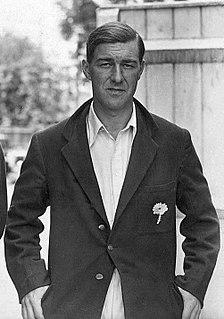
Norman Walter Dransfield Yardley was an English cricketer who played for Cambridge University, Yorkshire County Cricket Club and England, as a right-handed batsman and occasional bowler. An amateur, he captained Yorkshire from 1948 to 1955 and England on fourteen occasions between 1947 and 1950, winning four Tests, losing seven and drawing three. Yardley was named Wisden Cricketer of the Year in 1948 and in his obituary in Wisden Cricketers' Almanack, he was described as Yorkshire's finest amateur since Stanley Jackson.
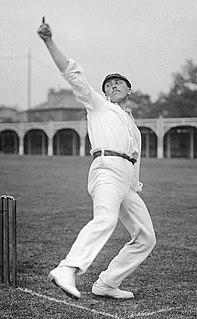
Wilfred Rhodes was an English professional cricketer who played 58 Test matches for England between 1899 and 1930. In Tests, Rhodes took 127 wickets and scored 2,325 runs, becoming the first Englishman to complete the double of 1,000 runs and 100 wickets in Test matches. He holds the world records both for the most appearances made in first-class cricket, and for the most wickets taken (4,204). He completed the double of 1,000 runs and 100 wickets in an English cricket season a record 16 times. Rhodes played for Yorkshire and England into his fifties, and in his final Test in 1930 was, at 52 years and 165 days, the oldest player who has appeared in a Test match.
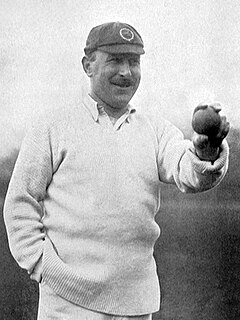
George Herbert Hirst was a professional English cricketer who played first-class cricket for Yorkshire County Cricket Club between 1891 and 1921, with a further appearance in 1929. One of the best all-rounders of his time, Hirst was a left arm medium-fast bowler and right-handed batsman. He played in 24 Test matches for England between 1897 and 1909, touring Australia twice. He completed the double of 1,000 runs and 100 wickets in an English cricket season 14 times, the second most of any cricketer after his contemporary and team-mate Wilfred Rhodes. One of the Wisden Cricketers of the Year for 1901, Hirst scored 36,356 runs and took 2,742 wickets in first-class cricket. In Tests, he made 790 runs and captured 59 wickets.

Willie Bates, known as Billy Bates, was an English cricketer. Skilled with both bat and ball, Bates scored over 10,000 first-class runs, took more than 870 wickets and was always reliable in the field. A snappy dresser, Bates was also known as "The Duke".
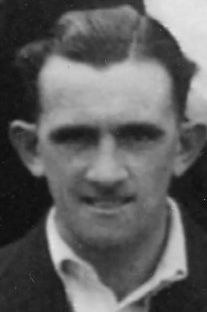
Alexander "Alec" Coxon was an English cricketer who played for Yorkshire. He also played one Test match for England in 1948. Cricket writer, Colin Bateman stated, "Coxon's Test career was abrupt – much like the man himself. An ever-willing seam bowler, he was one of several tried in the search for a partner for Alec Bedser, but he did himself no favours with a brusqueness which could upset".
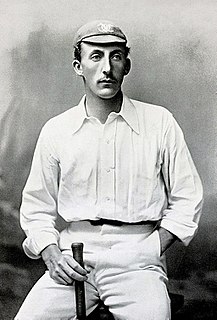
Lionel Charles Hamilton Palairet was an English amateur cricketer who played for Somerset and Oxford University. A graceful right-handed batsman, he was selected to play Test cricket for England twice in 1902. Contemporaries judged Palairet to have one of the most attractive batting styles of the period. His obituary in The Times described him as "the most beautiful batsman of all time". An unwillingness to tour during the English winter limited Palairet's Test appearances; contemporaries believed he deserved more Test caps.
Joe Ambler was an English professional first-class cricketer who made eight appearances in county cricket during the 1880s, playing for both Yorkshire and Somerset. A right-handed batsman and right-arm fast-medium paced bowler, Ambler also kept wicket on occasion.
Donald Vincent Brennan was an English cricketer, who played in two Tests in 1951. For his county Yorkshire he was their regular wicket-keeper between 1947 and 1953, taking a total of 380 dismissals in those seven seasons. A poor batsman, he averaged 10.52 in first-class cricket with only a single fifty in 232 appearances. Cricket correspondent, Colin Bateman, noted after Brennan had replaced Godfrey Evans in the England cricket team, that "there can be few higher tributes to his 'keeping skills than that".

Ephraim Lockwood was an English first-class cricketer, and captain of Yorkshire County Cricket Club in the 1876 and 1877 seasons.

Matthew James Wood is a former English first-class cricketer who played for Yorkshire County Cricket Club and Glamorgan in a career lasting eleven years. He was a right-handed batsman and occasional off spinner, who made his debut in first-class cricket in 1997. He played 136 first-class matches, scoring 7,052 runs with a highest score of 207, at an average of 32.80. He compiled sixteen first-class centuries, took 118 catches and snared two wickets at 21.50.
Charles Ingram Armitage was an English amateur cricketer, who played first-class cricket for Yorkshire County Cricket Club. Although he appeared only three times, his career spanned six years, from 1873 to 1878. His father-in-law was William Coates, a career soldier.

Peter John Kippax was an English first-class cricketer who played for Yorkshire, Durham and Northumberland. A right-handed batsman and leg spin bowler, he played five first-class matches but they spanned twenty six years.
J. H. Wood was an English first-class cricketer, who played two matches for Yorkshire County Cricket Club in 1881. In his only first-class innings he opened the batting and scored 14 runs out of 388, as Yorkshire defeated Surrey by an innings and 217 at Fartown Ground, Huddersfield. He played in the return fixture against Surrey at The Oval, but failed to bat as he was 'absent hurt', and never played for Yorkshire again. He played club cricket for Sowerby Bridge C.C., and scored 44 against Nottinghamshire Colts in 1880.
Joseph Berry was an English first-class cricketer, active 1861–74, who played for Sheffield and Yorkshire. He made five appearances as a right-handed batsman, scoring 82 runs at 10.25 with a highest score of 30. He held two catches but his right-arm medium pace bowling was not called upon.
Wilfred Blake was an English first-class cricketer, who had the distinction of playing for both Yorkshire County Cricket Club and Lancashire County Cricket Club in his brief three match career.
Thomas Henry Hirst was an English first-class cricketer, who played against Somerset for Yorkshire County Cricket Club, in a drawn match at The Circle, Kingston upon Hull, in 1899. He reappeared for Scotland against the Australians in 1905.
Sam Kilburn was an English first-class cricketer, who played one match for Yorkshire County Cricket Club, against Essex at Bradford Park Avenue, in 1896. He also played for the Second XI in 1899 against Durham in the Minor Counties Championship.
Henry Lockwood was an English first-class cricketer, who played sixteen matches for Yorkshire County Cricket Club between 1877 and 1882.
Joe Thomas Lodge, better known as Tommy Lodge is an English first-class cricketer, who played two matches for Yorkshire County Cricket Club in 1948.
Clifford Walker was an English first-class cricketer, who played five matches for Yorkshire County Cricket Club between 1947 and 1948, and then 121 matches for Hampshire.
References
- 1 2 3 Warner, David (2011). The Yorkshire County Cricket Club: 2011 Yearbook (113th ed.). Ilkley, Yorkshire: Great Northern Books. p. 382. ISBN 978-1-905080-85-4.